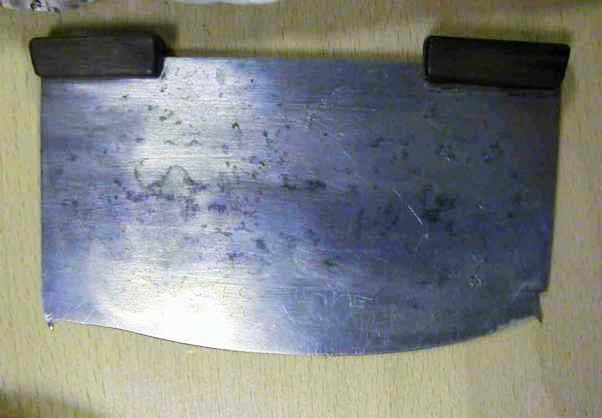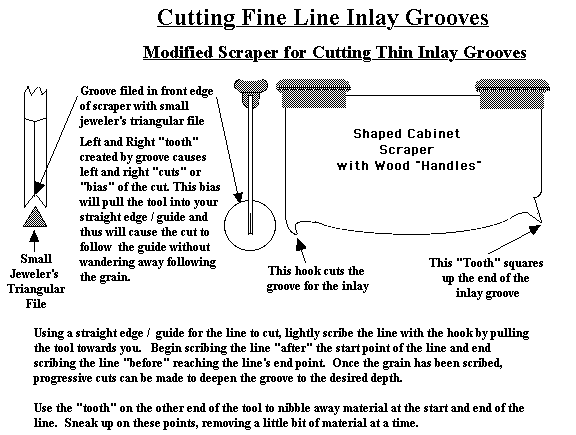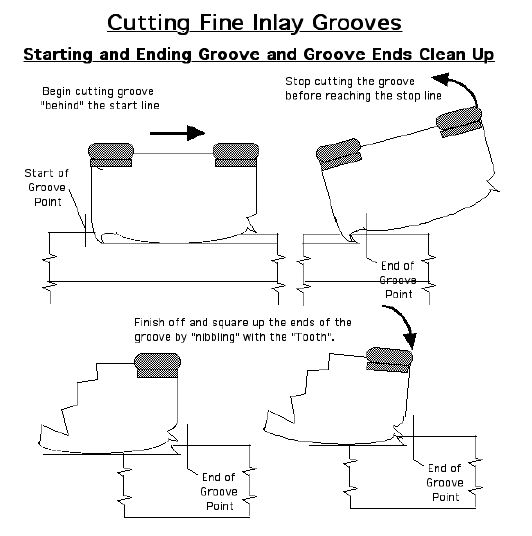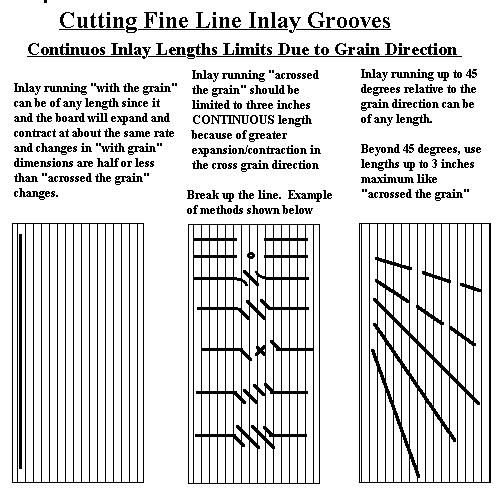The Feb 2002 issue of Woodwork had an article by Michael Fortune on inlaying you might want to find. Between it and what follows you should get enough info to have a go at doing some fine line inlaying in a future project.
I had the opportunity to sit in on a Michael Fortune class on fine line inlaying. Here's what I learned which may be of use to you.
I'm going to start with a simple tools you can make from an old cabinet scraper, discuss how to use it and then into some tricks Mr. Fortune uses to prepare inlay material.
Here's a picture of Mr. Fortune's Inlay Grooving Tool - a cabinet scaper, some wood and a bit of filing.
Here's more on this tool:
And here's how to use it:
Now a little about inlaying and wood expansion and contraction.
The three inch limit on cross grain lines is what Michael Fortune recomends. Doug Stowe, another very knowledgable woodworker who does a lot of inlay work recomends a 3 1/2" limit on cross grain inlays. You can err on the side of caution or not.
OK, a groove the width of a cabinet scraper is pretty narrow so how do you make the strips for line inlaying? You can resaw some pretty thin stuff but you still have to get the faces parallel and smooth and planing thin stock can be real tricky or downright dangerous using your planer - right?
Well yes and no. Yes it's a bad idea to plane stock less than a 1/8 inch thick (some say less than a quarter inch thick) but it can be done safely with the right jig and technique. Click here to find out how.



